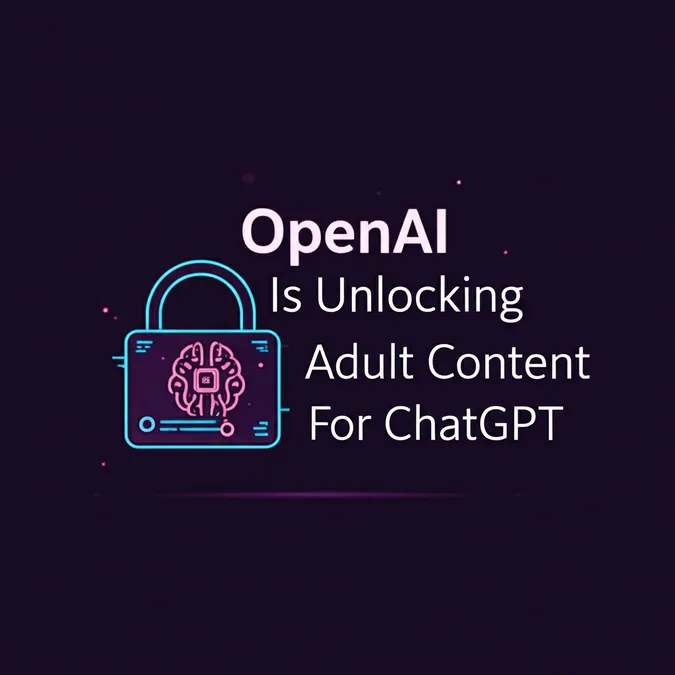Developer Offer
Try ImaginePro API with 50 Free Credits
Build and ship AI-powered visuals with Midjourney, Flux, and more — free credits refresh every month.
OpenAI Atlas Browser Flaw Exposes ChatGPT Memory To Attackers
Just days after cybersecurity analysts issued warnings, a significant vulnerability has been discovered in OpenAI’s new Atlas browser. Researchers have demonstrated how this flaw can be exploited by attackers to infect systems with malicious code, gain access privileges, or deploy malware, raising immediate questions about the security of AI-native browsers in enterprise environments.
The research, conducted by LayerX Security, reveals that attackers can exploit the flaw to inject malicious instructions directly into a user’s ChatGPT memory. This can potentially lead to remote code execution, a severe security risk. LayerX has responsibly disclosed the exploit to OpenAI and has not shared further technical details publicly to prevent misuse.
How the Five-Step Exploitation Works
The attack unfolds in a sequence of five steps, as explained in a blog post by Or Eshed, the co-founder and CEO of LayerX.
First, a user logs into their ChatGPT account, and an authentication token is stored in their browser. Next, the user is tricked into clicking a malicious link that takes them to a compromised website. This malicious page then initiates a Cross-Site Request Forgery (CSRF) attack, leveraging the user's active ChatGPT session. Through this CSRF exploit, hidden instructions are injected into the user's ChatGPT memory without their knowledge, effectively tainting the core LLM memory. Finally, when the user later queries ChatGPT, these tainted memories are invoked, allowing the deployment of malicious code that can give attackers control over systems or execute unauthorized actions.
The Persistent Threat of Compromised Memory
ChatGPT's memory feature is designed to be a helpful tool, remembering user queries, preferences, and chat history to provide personalized responses. However, this same feature becomes a powerful vector for attackers in this exploit.
Amit Jaju, a senior managing director at Ankura Consulting, highlights the danger: “Memory is account‑level and persists across sessions, browsers, and devices, so a single successful lure follows the user from home to office and from personal to corporate contexts.” This persistence is particularly concerning in BYOD or mixed-use settings, as it can re-trigger risky behaviors even after a device is rebooted, expanding the attack's blast radius beyond a single machine.
Jaju notes that while enterprise adoption of the macOS-only Atlas browser is currently low, the potential for personal ChatGPT accounts used for work to be compromised presents a plausible spillover risk.
How to Detect a Hit
Identifying a memory-based compromise in ChatGPT Atlas is unlike traditional malware detection. There are no malicious files or registry keys to find. Security teams must instead learn to spot behavioral anomalies in the AI's output.
“[Red flags include] an assistant that suddenly starts offering scripts with outbound URLs, or one that begins anticipating user intent too accurately,” said Sanchit Vir Gogia, CEO and chief analyst at Greyhound Research. “When memory is compromised, the AI can act with unearned context.”
For forensic analysis, Gogia advises security teams to correlate browser logs with memory change timestamps and prompt-response sequences. Exporting and parsing chat histories becomes a critical step, especially looking for instances where a user clicked an unknown link shortly before unusual AI-driven actions occurred.
Mitigation and Response Strategies
Given the novelty of this threat, mitigation begins with caution. Enterprises are advised to keep Atlas disabled by default and limit its use to controlled pilots with non-sensitive data. Jaju recommends that security teams enhance monitoring to detect AI-suggested code that fetches remote payloads, unusual data egress after ChatGPT use, and session-riding behaviors in SaaS applications. Web filtering for newly registered or uncategorized domains is also suggested.
Because the threat is tied to the user's cloud account, not the device, incident response must be account-focused. “Memory must be cleared. Credentials should be rotated. All recent chat history should be reviewed for signs of tampering, hidden logic, or manipulated task flow,” Gogia noted.
Are AI Browsers Safe?
This vulnerability is not the only security concern surrounding AI-native browsers. LayerX also claimed that ChatGPT Atlas is poorly equipped to handle phishing attacks, failing to stop over 94% of threats in their tests.
Other AI browsers tested by the company also showed poor results. Perplexity’s Comet and Genspark stopped only 7% of phishing attacks, while Arc’s Dia browser managed to block about 46%. In comparison, traditional browsers like Edge and Chrome successfully stopped around 50% of phishing attacks with their out-of-the-box security features.
Compare Plans & Pricing
Find the plan that matches your workload and unlock full access to ImaginePro.
| Plan | Price | Highlights |
|---|---|---|
| Standard | $8 / month |
|
| Premium | $20 / month |
|
Need custom terms? Talk to us to tailor credits, rate limits, or deployment options.
View All Pricing Details

